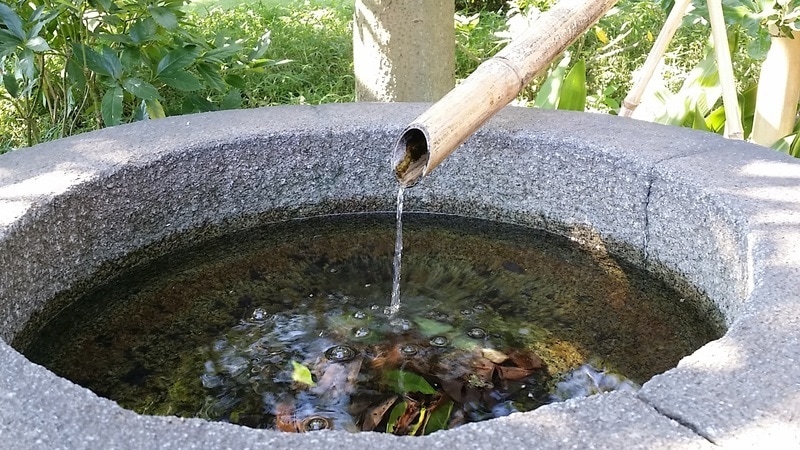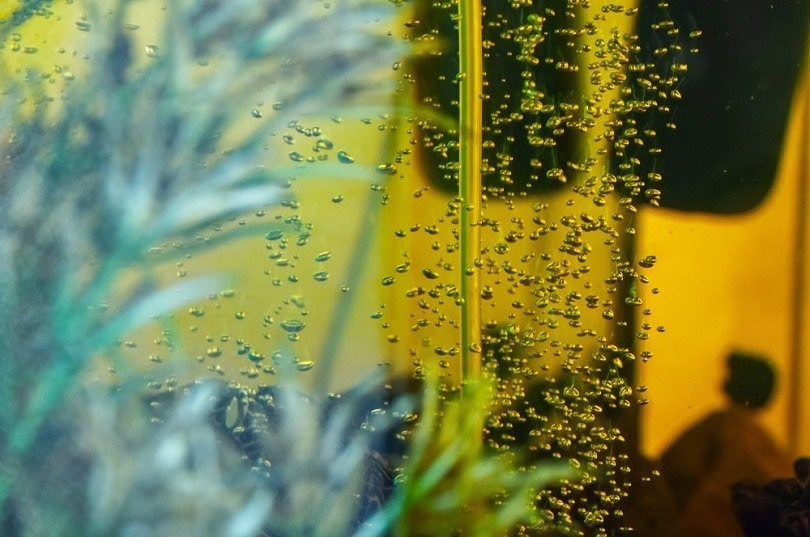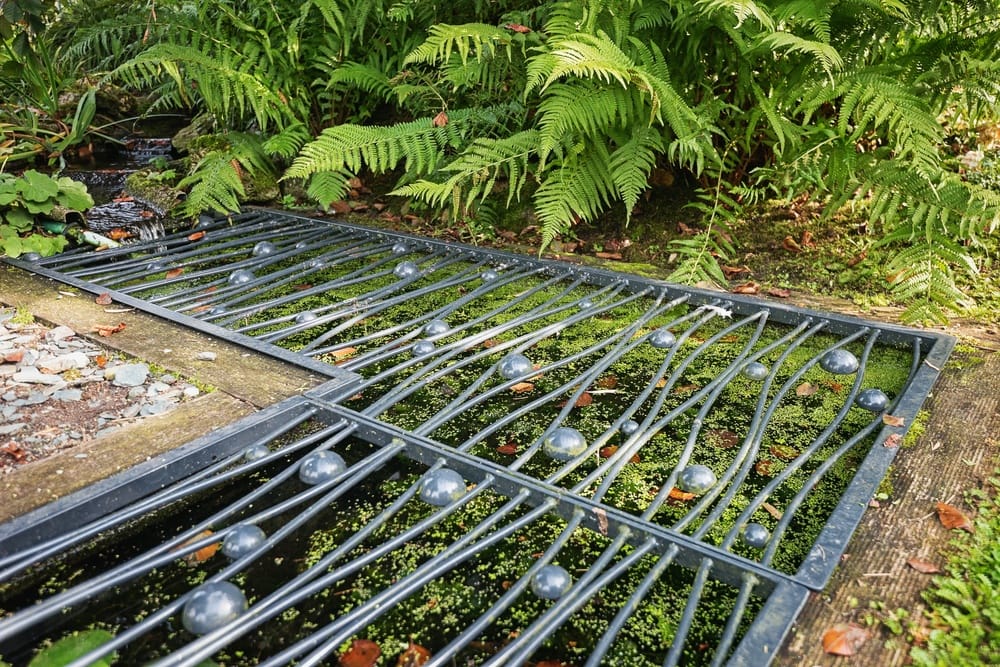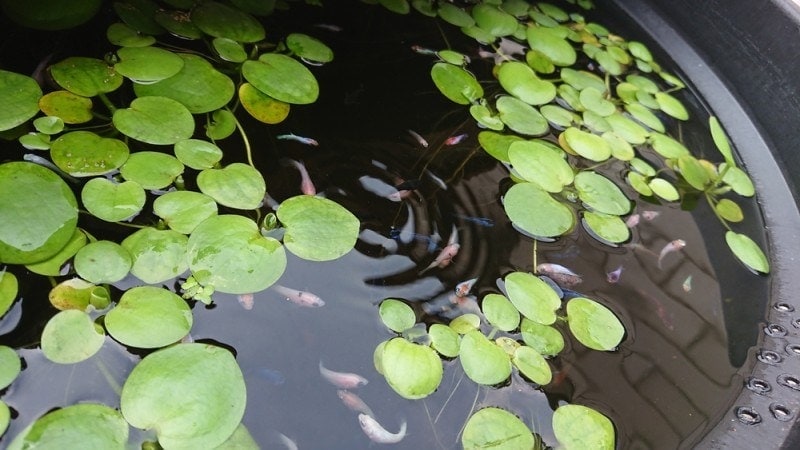Betta fish are one of our favorite kinds of fish, especially to have at home. You can always have an aquarium with Betta fish in it, but that is kind of boring. We personally love Betta ponds, which are outdoor ponds that you can enjoy from the comfort of your porch or patio. However, making a Betta pond is not that easy. Sure, it is rewarding and cool to look at, but it’s a lot of work, too. At any rate, learning how to make a Betta pond is what we are here to teach you today.

The 8 Steps To Make A Betta Pond
Here are the most important steps to make a great Betta fish pond:
1. Choosing The Location
The first step in making your Betta pond is to choose the location where the pond is going to be. Ideally, you want the earth to be fairly compact. Anywhere with loose soil is not ideal, as everything is going to sink into the ground, potentially warping and damaging the pond. If the soil has been freshly laid, you need to compact it. It is better to choose a spot with a solid base from the beginning.
Next, you want to make sure that the location you are choosing for your pond is very flat and level. You don’t want one side of the pond being higher up than the other. This will cause drainage and spilling issues, especially when it rains.
Finally, you want to pick a spot that has a little bit of cover. Yes, you do want a bit of sunlight reaching the Betta pond, but not too much. Too much sunlight may heat the pond too much and could cause future algae blooms.
To avoid algae blooms and overheating, limiting direct sunlight with some cover is a good idea (we have covered more tips here). Placing the pond against a wall or under a tree is a good idea. Just beware that putting the pond under a tree will lead to more cleanup duties, as debris from the trees is likely to fall into the pond.
2. Making The Pond Outline & Choosing The Material
The next thing that you need to do to make your Betta pond is to make the actual pond itself. Now is the time to decide how large the pond is going to be. Betta fish don’t need all that much room, so the pond does not have to be huge. However, if you want multiple Betta fish in the same pond or would like to house it with other fish, you will want to make it a substantial size. A pond around 100 gallons is sufficient.
Now you need to dig a hole that is the perfect size for the pond you are making. Make sure to dig at least half an inch deeper than the actual bottom of the pond, as this will give you room to work. If you don’t want to dig yourself, you can always hire a handyman or landscaper to do the job for you, but, of course, that is going to be more expensive than doing it yourself.
Next, choose the material that you are going to be using to make the Betta pond. You cannot just pour water into the hole since it will drain out through the ground. This requires a pond liner. Go to your local hardware or pet fish store and pick one up. These are not that easy to install, so you might either need some professional help. You need to make sure that the pond liner is installed correctly or else the whole project will go down the drain.

3. The Substrate
Now that we have the actual pond ready to go, it is time to start putting stuff in the pond. Seeing as the substrate is at the bottom, it is wise to start with that.
In the wild, Betta fish live in rice paddies and shallow streams, so their natural substrate is usually a thick layer of sludge, rotting plant matter, and other organics that have settled at the bottom. Sure, you could go this route, but it makes cleaning the pond and doing water changes very hard. Plus, once the pond has been active for long enough, there will be a natural buildup of organic matter at the bottom anyway.
We would recommend going with either cheap aquarium gravel or aquarium-grade sand. You should aim to have about 2 inches of substrate at the bottom at the very least. Sand is nice if you want to have a lot of rooted plants that are root feeders. However, sand is much more difficult to maintain than fine aquarium gravel, which is something you might be looking out for. This really all depends on what your needs and preferences are. If you want to do less cleaning, have less maintenance, and not have to replace the substrate very often, aquarium gravel will do just fine.
4. Plants & Decorations
The next thing that you want to do when making your Betta pond is to add the plants and decorations. Now, Betta fish live in water that typically has tons of rocks, sticks, and plants. They love to get some cover from predators above, hiding from other fish, and getting some shade from the sun. The point here is that you want to spend a fair amount of time picking the plants, rocks, woods, and other decorations that your Bettas will appreciate.
If you are going to have multiple Betta fish in the same pond, you definitely want to make it a big pond with lots of hiding spaces, as they do get very territorial and aggressive towards each other.
Some good floating plants are a must-have. You don’t want to cover more than about 1/5 of the water’s surface with floating plants, as the water does need to be oxygenated and aerated.
If you have chosen aquarium gravel, we would recommend a large number of floating plants compared to if you have used sand. Gravel is not the best for rooted plants that need to make a strong root system. If you have gravel, you can have some rooted plants, but you will need to make sure to add nutrients to the water.
Sand is way better for rooted plants, so if you plan on having lots of rooted plants, you should probably go with sand. At any rate, pick some of the plants which Betta fish like the most and that suit your pond and the substrate.

5. Filtration
The next thing that you will need to take care of is filtration. Many people say that Betta fish don’t need filtration, which is just not true. In the wild, they don’t have actual filters per se, but water is always changing with rains and floods, plus there are always beneficial bacteria present in the wild, which help to filter water.
The point is that you should definitely have a filter for an outdoor Betta fish pond. It will help make the water cleaner and clearer and will reduce ammonia and nitrates. Plus, it will help cut down on cleaning, maintenance, and water changes. A good biological filtration unit will also cut down on algae blooms.
There are external filters for ponds as well as submersible ones. Both have their advantages and drawbacks. The submersible kind looks better because it is out of sight. Plus, they tend to be a little cheaper but are harder to maintain and take up valuable real estate in the pond. At the same time, they usually are not great for powering things like fountains and other water features.
On the other hand, you have an external filter. These tend to be much easier to maintain and are generally more powerful and efficient. They have more room for media and are better for powering water features, too. However, these external filters can be quite expensive, plus they do not look very nice. If you have a smaller pond, we would recommend a submersible filter, but if you have a larger pond that requires more power, you will probably want an external one.
It is also not a bad idea to add a protein skimmer into the mix, as this item will help to remove any remaining debris that might be in the water. Now, chemical filtration is another type of filtration that you might want to consider. Activated carbon helps to remove toxins, odors, and colors from pond and aquarium water. While this type of filtration is not 100% necessary, it will help out quite a bit, especially in the long run.
6. Adding The Water – Parameters
We would recommend filling the pond up so that the top of the water surface is no less than 1 inch under the rim of the pond. You don’t want the pond overflowing, especially when it rains. If you do not have enough water in the pond, you can always add a little more if needed.
You do need to remember that you cannot just pour a bunch of water from your hose or sink into the pond. That is no good. Water that you have at home is going to be full of chlorine (here is how to make it safe). Chlorine will hurt and kill your fish and your plants. So, you should let the water sit in a bucket or buckets for at least 24 hours. This will allow the chlorine to dissipate into the air.
However, your local water treatment plant might be using more than just chlorine, in which case you will need to treat the water with a special dechlorinating agent to get rid of the chlorine and other toxic substances. Also, if the water in your area is very hard, you might want to use a water softener as well. Betta fish are pretty resilient, but they do not like their water to be too hard.
The acidity of the water plays a big role in the health and happiness of your Betta fish. Betta fish like the water to be pretty neutral, about 7.0 on the scale of 1 to 14. Betta fish can handle slightly acidic or basic water (anything between 6.5 and 7.5 is fine) so long as it is stable.
The final thing that you need to pay attention to in terms of water parameters for your Betta fish is the temperature of the water. Unless you live in a tropical climate where the temperature never really goes below 24 or 25 degrees Celsius, you will need to get a pond thermometer and a heater.

Betta fish are tropical fish and they need the water to be quite warm. The water temperature should be between 25.5 and 26.5 Celsius, or between 78 and 80 degrees Fahrenheit. Never let the water get below 74 degrees Fahrenheit or 23.5 degrees Celsius, as this will cause some big problems for your Betta fish. The same goes for anything over 27.5 degrees Celsius or 81.5 degrees Fahrenheit (more on betta temperature here).
7. UV Sterilization
Another thing that you might want to seriously consider for your Betta pond is a UV sterilizer. Now, you can get a UV sterilizer as a separate thing, or you can also get one that is built right into a filtration unit.
Algae can be a pretty big problem when it comes to outdoor ponds. Sunlight causes algae to bloom. Since your pond will probably get a bit of sunlight, you need to control algae blooms. UV sterilizers will kill free-floating algae and therefore keep it under control.
8. Keeping Predators Away
The final thing that you want to do for your Betta pond is to make sure that predators are kept away. Birds and other animals would love nothing more than to make a meal out of your Betta fish. So, you should probably set up some birdbaths and bird feeders at a distance from the pond since this will lure them away from your fish.
At the same time, using a scarecrow is never out of the question. Some people also have special see-through nets to cover ponds so that birds and other critters do not have access to your fish. Pond dyes help, too. Pond dyes will make the water darker and make it harder for birds to see the Betta fish. Plus, it helps control algae.

 Conclusion
Conclusion
As you can see, making your own Betta pond from scratch is a challenge. It is hard work, a bit costly, and takes a fair amount of time to get complete. However, we personally think that the results are well worth the invested time and money. If making your own Betta pond sounds like a good idea to you, you should definitely give it a try.
- You Might Be Interested In: Betta Fish Supply List: 8 Essential Items You Need to Care for Your Fish!
Featured Image Credit: toinkdunk, Shutterstock
